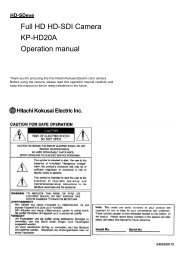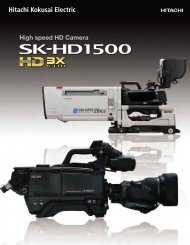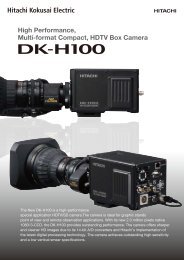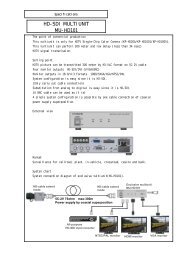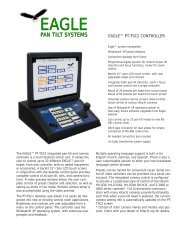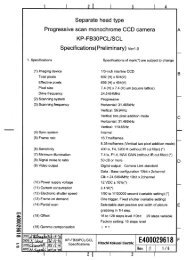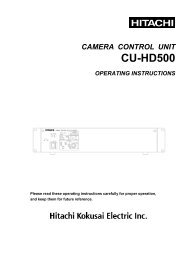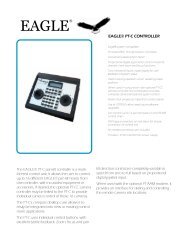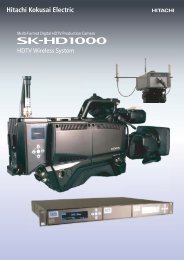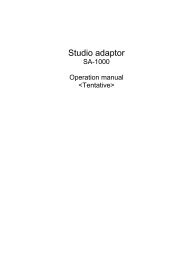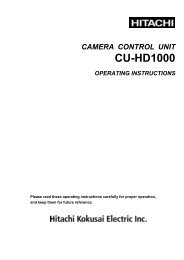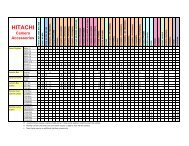HV-HD201 Op Manual - Hitachi Kokusai Electric America, Ltd.
HV-HD201 Op Manual - Hitachi Kokusai Electric America, Ltd.
HV-HD201 Op Manual - Hitachi Kokusai Electric America, Ltd.
Create successful ePaper yourself
Turn your PDF publications into a flip-book with our unique Google optimized e-Paper software.
Lens<br />
CAUTION<br />
Observe the dimensions of the lens mounting<br />
selection as illustrated at the right.<br />
If the dimensions are not observed, do not use<br />
such a lens, because the lens and the camera<br />
will be damaged.<br />
Flange surface of lens<br />
Lens selection<br />
1) <strong>Op</strong>tical characteristics<br />
The proper lens is vital for obtaining full<br />
performance from the camera. The exit pupil<br />
distance is particularly important for a 3CCD<br />
type camera. If too short, vertical color<br />
shading can appear in the picture.<br />
Also, as the lens iris approaches fully open,<br />
problems such as loss of resolution, shading<br />
and flare (overall image "white-out") can<br />
detract from picture quality. When using in<br />
applications that call for open iris, the lenses<br />
for 3CCD are recommended. If another lens is<br />
contemplated, check the performance<br />
beforehand.<br />
4.0mm or less<br />
2) Auto iris lens<br />
Main types are Video (with self contained iris<br />
amplifier) and DC (DC voltage applied to open<br />
lens iris) and manual over-ride (e.g. Cosmicar).<br />
Lenses without self-contained iris amplifier are<br />
not compatible.<br />
Camera settings differ according to the auto iris<br />
lens type (see page 45).<br />
Note: The <strong>HV</strong>-<strong>HD201</strong> uses lens connector wiring<br />
prescribed by the EIAJ (Electronic Industries<br />
Association of Japan). Refer to page 64.<br />
7



